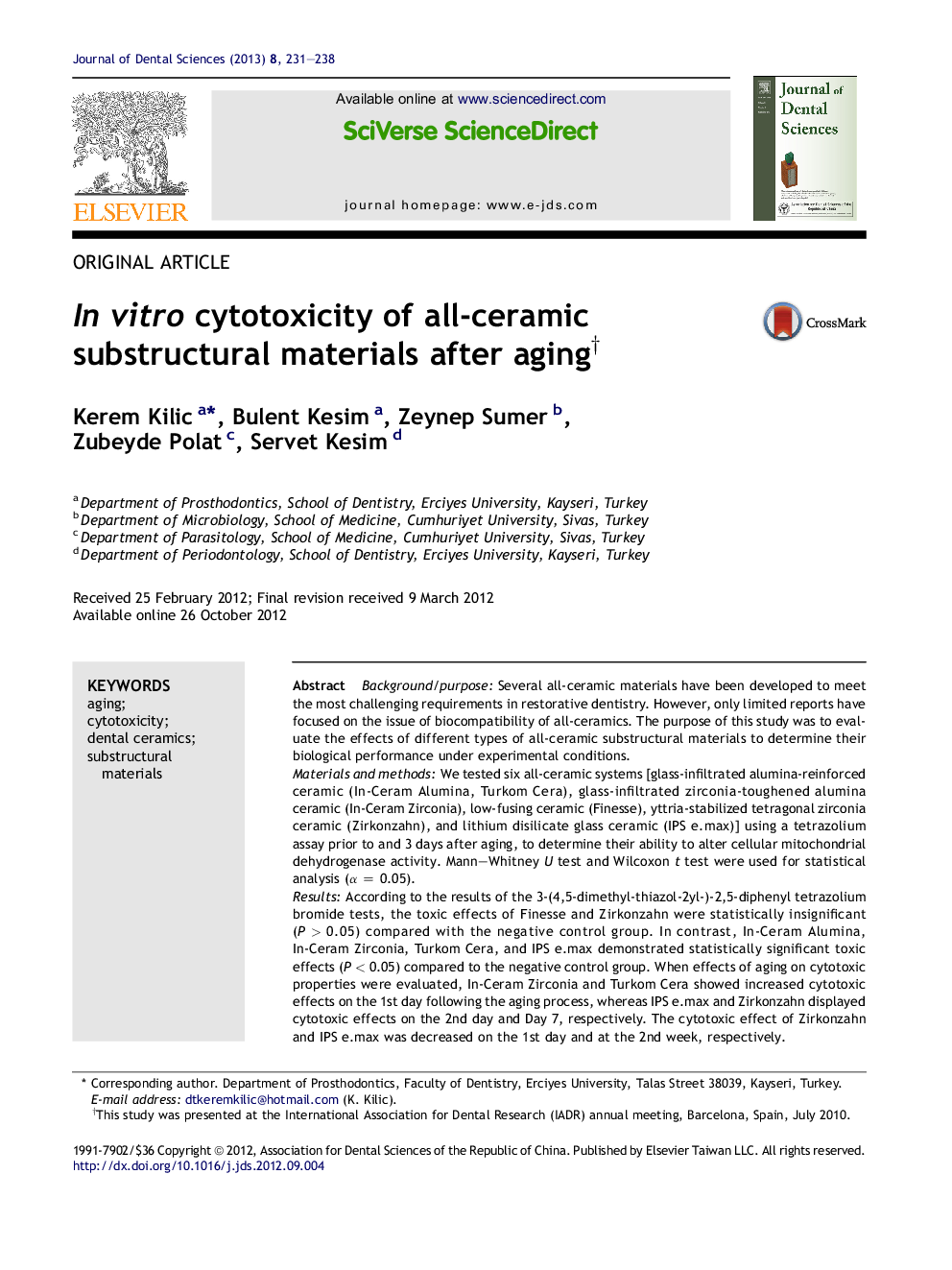| کد مقاله | کد نشریه | سال انتشار | مقاله انگلیسی | نسخه تمام متن |
|---|---|---|---|---|
| 3144619 | 1196984 | 2013 | 8 صفحه PDF | دانلود رایگان |

Background/purposeSeveral all-ceramic materials have been developed to meet the most challenging requirements in restorative dentistry. However, only limited reports have focused on the issue of biocompatibility of all-ceramics. The purpose of this study was to evaluate the effects of different types of all-ceramic substructural materials to determine their biological performance under experimental conditions.Materials and methodsWe tested six all-ceramic systems [glass-infiltrated alumina-reinforced ceramic (In-Ceram Alumina, Turkom Cera), glass-infiltrated zirconia-toughened alumina ceramic (In-Ceram Zirconia), low-fusing ceramic (Finesse), yttria-stabilized tetragonal zirconia ceramic (Zirkonzahn), and lithium disilicate glass ceramic (IPS e.max)] using a tetrazolium assay prior to and 3 days after aging, to determine their ability to alter cellular mitochondrial dehydrogenase activity. Mann–Whitney U test and Wilcoxon t test were used for statistical analysis (α = 0.05).ResultsAccording to the results of the 3-(4,5-dimethyl-thiazol-2yl-)-2,5-diphenyl tetrazolium bromide tests, the toxic effects of Finesse and Zirkonzahn were statistically insignificant (P > 0.05) compared with the negative control group. In contrast, In-Ceram Alumina, In-Ceram Zirconia, Turkom Cera, and IPS e.max demonstrated statistically significant toxic effects (P < 0.05) compared to the negative control group. When effects of aging on cytotoxic properties were evaluated, In-Ceram Zirconia and Turkom Cera showed increased cytotoxic effects on the 1st day following the aging process, whereas IPS e.max and Zirkonzahn displayed cytotoxic effects on the 2nd day and Day 7, respectively. The cytotoxic effect of Zirkonzahn and IPS e.max was decreased on the 1st day and at the 2nd week, respectively.ConclusionSeveral types of all-ceramic substructures did not cause the same in vitro responses. Finesse and Zirkonzahn did not carry high biologic risk. However, our results suggest that In-Ceram Alumina, In-Ceram Zirconia, Turkom Cera, and IPS e.max should not be considered as entirely biocompatible materials.
Journal: Journal of Dental Sciences - Volume 8, Issue 3, September 2013, Pages 231–238